New York City is constantly being rebuilt. In the 19th and 20th centuries, dozens of beautiful old buildings were demolished to make way for new development. It wasn’t until 1966, with the passage of the National Historic Preservation Act, that historic buildings could be protected by federal law.
48 buildings below were also among of them.
1. The New York World, New-York Tribune, and New York Times were all located on “Newspaper Row” near City Hall. The World and Tribune buildings were demolished in 1955 and 1966, respectively; the Times building still stands (though it’s no longer home to the newspaper).

2. The Old Metropolitan Opera House was built in 1883 near Times Square. It was the first home of the Metropolitan Opera Company, but was demolished in 1967 and performances were moved to Lincoln Center.

3. An early incarnation of Madison Square Garden was located between Fifth and Madison Avenues, and 26th and 27th Streets. The arena was demolished in 1926.

4. The Hotel Astor was built in 1904 at Broadway and 44th Street. It was demolished in 1967 and is now occupied by a high rise.

5. The Ziegfeld Theater on 54th Street and 6th Avenue opened in 1927 with a performance of Rio Rita. It was torn down in 1966 to make room for a skyscraper.

6. The Brooklyn Savings Bank was completed in Brooklyn Heights in 1894. While it was heralded as an architectural masterpiece, it faced the wrecking ball in 1964.

7. The Hippodrome stood on 6th Avenue between 43rd and 44th Streets from 1905 to 1939. It was one of the largest theaters of its time, with a seating capacity of 5,200.

8. The Singer Building in lower Manhattan was completed in 1908 and served as the headquarters of the Singer Manufacturing Company. It was demolished in 1968.

9. Located near the Singer Building, the City Investing Tower was an oddly shaped tower that was razed in 1986. Hudson Terminal, a rail station, was built in 1909, closed in 1971, and later demolished.

10. The Commodore Hotel was built in 1919 east of Grand Central Terminal. In 1980 it was completely remodeled, and is now the Grand Hyatt New York.
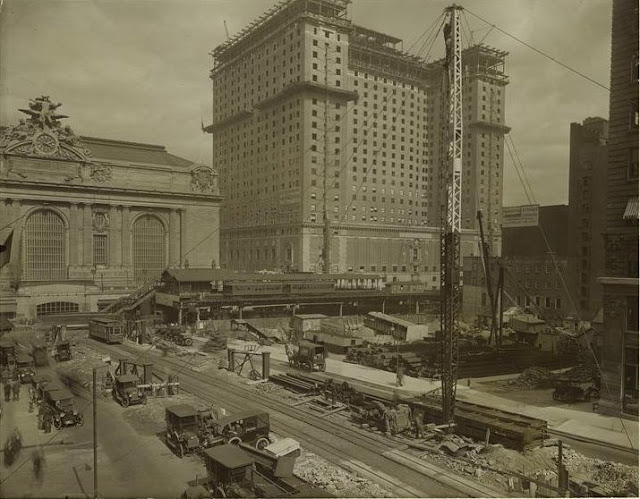
11. The St. Paul Building opened in 1899 on lower Broadway and was named after the chapel across the street. It was knocked down in 1958.

12. The Gillender Building was completed in the Financial District in 1897, but stood for only 13 years. It was destroyed in 1910 and replaced by a bigger building that combined its neighboring lot.

13. The Central Park Casino was a high-end restaurant and nightclub in the late 1800s. It was knocked down by parks commissioner Robert Moses in 1936.

14. The Germania Club House was a social club on Schermerhorn St. in Brooklyn. It was knocked down in the 1920s to make room for a subway.

15. In 1867, Congregation Emanu-El constructed a temple at 43rd Street and Fifth Avenue. It was sold to the Durst family in 1926 and demolished to make way for commercial development a year later.

16. The Washington Building, overlooking the Battery, was constructed in 1885, It was completely remodeled with a new facade in 1921.

17. Richmond Hill was a 26-acre colonial estate in what is now Greenwich Village. It was purchased by Aaron Burr in 1794, and razed in 1849.

18. The impressive Church of the Disciples, located on 45th Street and Madison Avenue, did not make it into the 20th century. It was built in 1873, but was demolished soon after, in 1899.
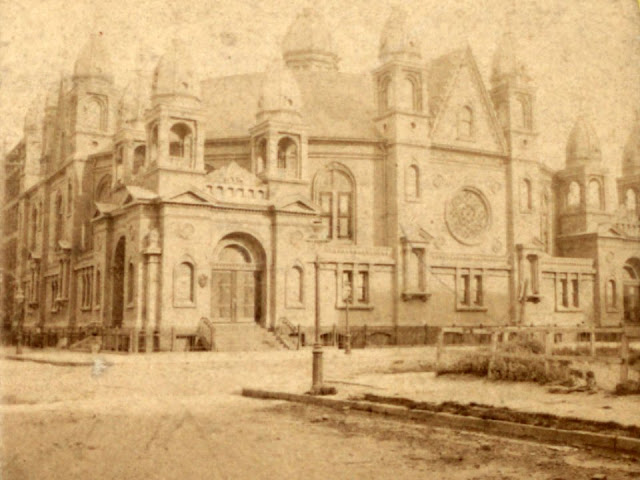
19. The Savoy-Plaza Hotel was constructed in 1927 on 5th Avenue between 58th and 59th Streets. In 1964 it was torn down.

20. The Exchange Court Building in lower Manhattan was erected in 1898. In 1980 it was converted to a modern office building.

21. Lewisohn Stadium was an open air amphitheater on the campus of the City College of New York that opened in 1915. It was destroyed in 1973 to make way for a new academic center.

22. The Vanderbilt family built a number of mansions on Fifth Avenue in the 1880s. The home pictured here, at 57th Street and Fifth Avenue, belonged to Cornelius Vanderbilt II. It was the largest private residence ever constructed in Manhattan.

23. William Kissam Vanderbilt’s “Petit Chateau,” built in 1882, was nearby at 52nd Street and Fifth Avenue. It was demolished to make way for a commercial building in 1926.
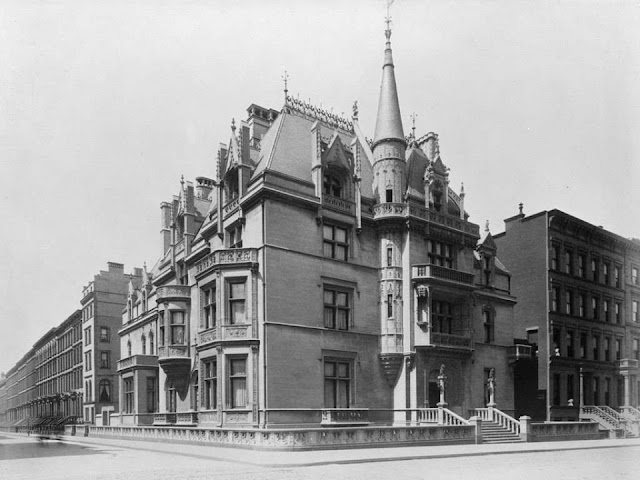
24. The “Triple Palace”, a series of townhouses also built for Vanderbilt family members, was directly south on Fifth Avenue. They were knocked down in the 1940s.

25. Construction of the New York Produce Exchange Building began in 1881 to replace an older produce exchange. The newer building was then demolished in 1957.

26. The Samuel Osgood House was the first presidential mansion, where George Washington lived for two years when New York was the nation’s capital. It was demolished in 1856.

27. The Equitable Life Building was built in 1870 in lower Manhattan. In 1912, it was destroyed by a fire.
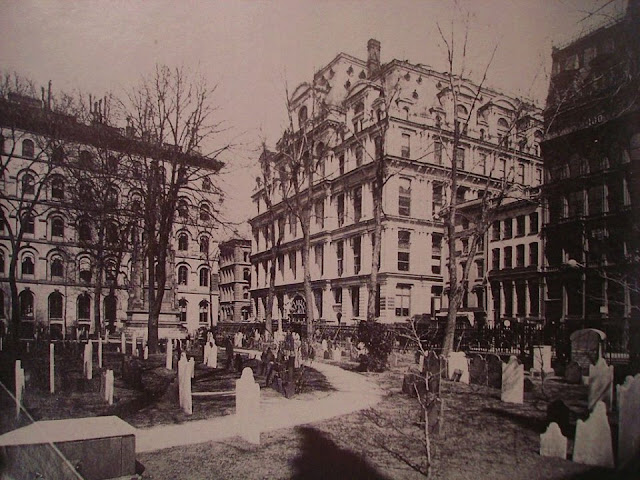
28. The John Wolfe Building was built in 1895 in the Financial District. It was demolished in 1974 to widen the street.

29. The Cotton Exchange Building was completed in 1885 in Hanover Square. It later became the India House, a private club.

30. The original Penn Station was built in 1910. It was sold and demolished in 1962 to make room for a larger rail station and Madison Square Garden.

31. The ornate Navarro Flats, a luxury apartment building, were on Central Park South in 1882. In 1926 the building was sold and a number of businesses took its place.

32. The City Hall Post Office first opened in 1878. The design was not well received, and it was demolished in 1938, one year ahead of the 1939 World’s Fair.

33. Tammany Hall was the headquarters of the Democratic party for decades. The building on East 14th Street was built in 1830, and was demolished in 1927 to make room for a new tower.

34. The New York Tombs, a prison that also housed courts and a police station, was built in 1838. However, the foundation was weak and the building began to sink. It was replaced by a new building in 1902, which was later demolished in 1974.

35. The luxurious Biltmore hotel opened on 43rd Street and Madison Ave. in 1913. It closed and was gutted in 1981.

36. Built for Senator William Clark on Fifth Avenue in 1897, the Clark Mansion had 25 bedrooms and 35 servants’ rooms. It was the 𝘤𝘩𝘪𝘭𝘥hood home of reclusive heiress Huguette Clark, and was torn down in the late 1920s.
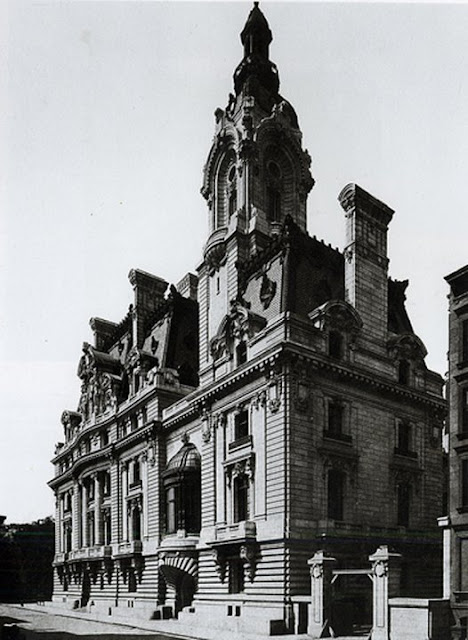
37. The Union Dime Savings Bank building first opened in 1906 near Bryant Park. It was demolished in 1956.
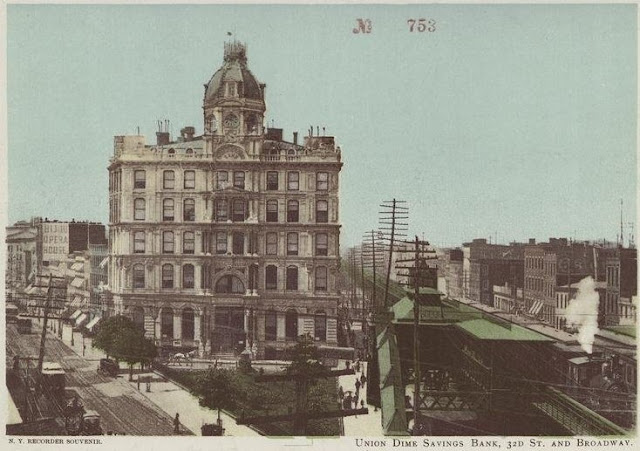
38. Wanamaker’s was a popular department store on Broadway and Ninth Street in the early 1900s. It caught fire and was demolished in 1956.
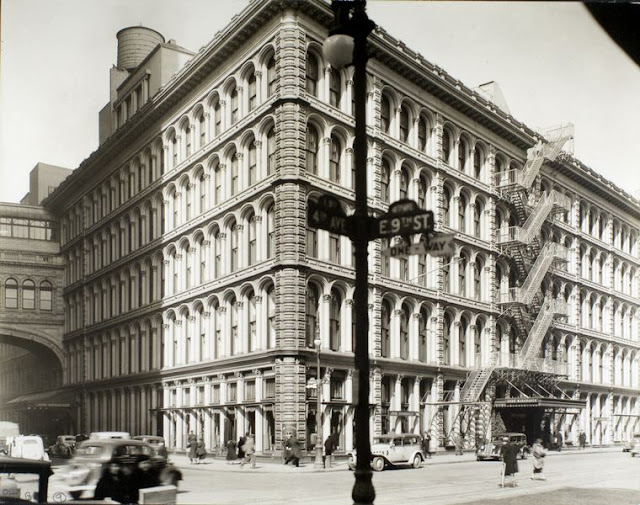
39. The All Angels’ Episcopal Church on the Upper West Side was lavishly appointed with a 2.5-story Tiffany window and pulpit decorated with limestone angels. Built in 1890, it was torn down in 1979 and replaced with a residential highrise.

40. Astor House, which opened in 1836 in lower Manhattan, was considered to be the finest hotel in America and counted Abraham Lincoln among its guests. It was demolished in stages between 1913 and 1926.

41. Temple Beth-El was constructed in 1891 at the corner of 76th Street and Fifth Avenue. The building was sold in 1945 and was demolished shortly after to make way for an apartment house.

42. The Richardson Spite House was built in 1882 at 82nd Street and Lexington Ave. to satisfy a personal grudge by blocking the view of another building. The four-story building stood until 1915.

43. Steel magnate Charles Schwab built an ornate 75-room mansion on Riverside Drive, which was completed in 1905. It was publicly demolished in 1948.
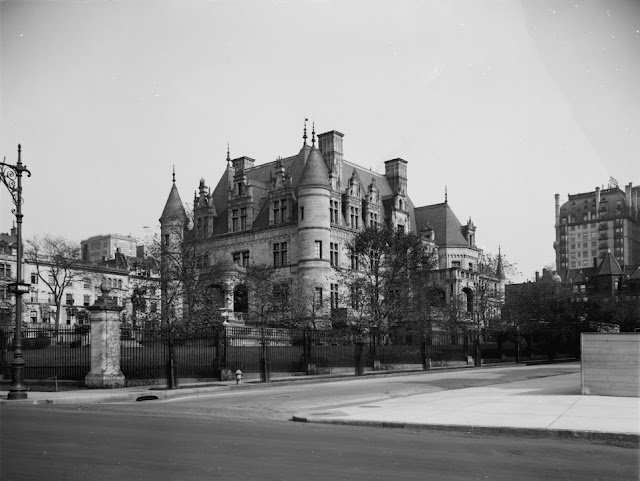
44. This home was built in 1884 at 68th and Madison Avenue for the President of the Metropolitan Museum of Art. In 1912 it was destroyed to make room for an apartment building.

45. The original Waldorf-Astoria Hotel opened in 1897, combining the Astor and Waldorf Hotels. It was destroyed in 1929 to make way for the Empire State Building and the hotel moved to 301 Park Ave.

46. Hotel Piccadilly was constructed in 1928 on West 45th Street. In 1982 it was replaced by a newer hotel, the Marriott Marquis.

47. The New York Herald Building, headquarters of the newspaper, was built in 1894 at 34th Street and Broadway. It was destroyed in 1921.

48. A “Victory Arch” was erected near Madison Square Park in 1919 after World War I ended. It was a temporary structure built of wood, and was eventually torn down.
